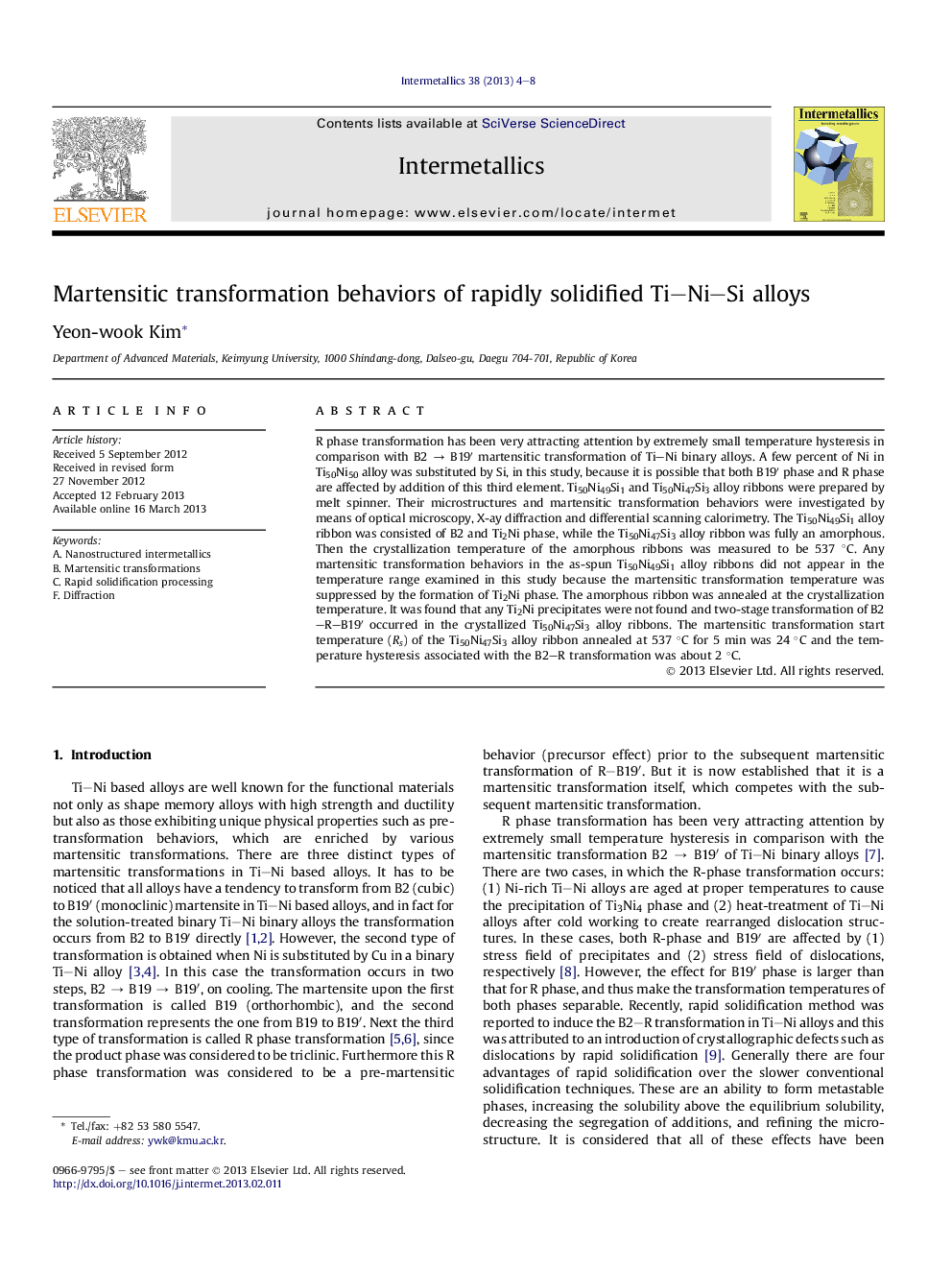| Article ID | Journal | Published Year | Pages | File Type |
|---|---|---|---|---|
| 1600318 | Intermetallics | 2013 | 5 Pages |
R phase transformation has been very attracting attention by extremely small temperature hysteresis in comparison with B2 → B19′ martensitic transformation of Ti–Ni binary alloys. A few percent of Ni in Ti50Ni50 alloy was substituted by Si, in this study, because it is possible that both B19′ phase and R phase are affected by addition of this third element. Ti50Ni49Si1 and Ti50Ni47Si3 alloy ribbons were prepared by melt spinner. Their microstructures and martensitic transformation behaviors were investigated by means of optical microscopy, X-ay diffraction and differential scanning calorimetry. The Ti50Ni49Si1 alloy ribbon was consisted of B2 and Ti2Ni phase, while the Ti50Ni47Si3 alloy ribbon was fully an amorphous. Then the crystallization temperature of the amorphous ribbons was measured to be 537 °C. Any martensitic transformation behaviors in the as-spun Ti50Ni49Si1 alloy ribbons did not appear in the temperature range examined in this study because the martensitic transformation temperature was suppressed by the formation of Ti2Ni phase. The amorphous ribbon was annealed at the crystallization temperature. It was found that any Ti2Ni precipitates were not found and two-stage transformation of B2–R–B19′ occurred in the crystallized Ti50Ni47Si3 alloy ribbons. The martensitic transformation start temperature (Rs) of the Ti50Ni47Si3 alloy ribbon annealed at 537 °C for 5 min was 24 °C and the temperature hysteresis associated with the B2–R transformation was about 2 °C.
► Ti50Ni49Si1 alloy ribbon was consisted of B2 and Ti2Ni phase. ► Ti50Ni47Si3 alloy ribbon was fully an amorphous and crystallized at 537 °C. ► Two-stage transformation of B2–R–B19′ occurred in Ti50Ni47Si3 alloy ribbons. ► Temperature hysteresis associated with the B2–R transformation was only 2 °C.
